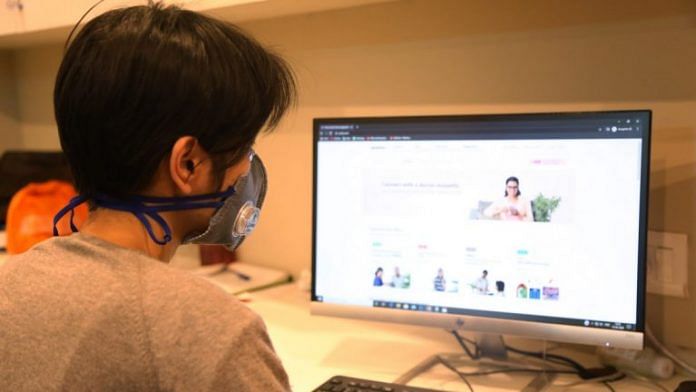Educational technology – or “edtech” – entered public consciousness over the past year as the COVID-19 pandemic moved learners young and old out of the classroom and into the virtual world of remote education.
One of its key benefits is improved accessibility to education – both in terms of helping pupils with learning difficulties or disabilities and in making learning less location-dependent.
Here are three technologies that are changing the way we learn.
1. Augmented and virtual reality
The key benefits of AR and VR technologies to education are making learning interactive and thereby more engaging – they can even add gaming elements to textbook material.
Curiscope’s Virtuali-tee is a t-shirt and app that enables users to learn about the human body. One person puts on the t-shirt while the other uses an AR app on a smartphone to virtually reveal – and explore – the various layers inside the body.
The technology can also have benefits for neurodiverse learners. Floreo is a telehealth platform that uses VR headsets to deliver social and behavioural therapy in schools and other settings.
2. Artificial intelligence
AI technology can benefit learners by enabling them to learn outside the classroom with virtual feedback, making learning more engaging and tailoring material to suit the individual. For example, Sparx Maths uses statistics and machine learning – a simple form of AI – to support teachers in providing personalized math homework.
The UK company claims that using the programme four hours a week, on average, can increase a pupil’s GCSE maths exam result by a grade. Sparx can also help disadvantaged children progress at the same rate as their more advantaged counterparts, reducing the attainment gap.
Meanwhile, KidSense.AI uses deep learning technology to offer a sophisticated automatic speech recognition system for children. Trained using children’s voice samples, KidSense powers the Roybi Robot – an AI-driven smart toy that teaches languages and basic skills in science, technology, engineering and math.
Also read: Amazon India launches ‘Amazon Academy’ to help students prep for JEE
3. Wireless technology
While edtech can prove an invaluable teaching tool, particularly in the virtual classroom, it can be rendered redundant in countries or regions with limited or no internet access.
Zaya’s ClassCloud is a plug-and-play device that can support up to 40 laptops or tablets in the classroom over Wi-Fi and provides the same standard of user experience whether it is connected to the internet or not. It has been used to improve access to high-quality education in rural locations in India.
Wireless technology can also enable users to download material on to a device in the learning environment and take it home with them, meaning educational providers can loan out devices to people who may not otherwise have access to them.
The offline learning app Kolibri, meanwhile, enables content to be seeded onto devices in areas where there is an internet connection – such as a school or a factory – and share it with others over an offline local network.
Education for all
Edtech’s greatest promise is to widen access to education for everyone, no matter where they are in the world – something which has become an increasing priority during the pandemic.
Entrepreneurs and innovators who want to have an impact in areas such as education are invited to submit their solutions to have a chance to work with leading organizations via the World Economic Forum’s UpLink initiative – an open digital platform that aims to accelerate concrete progress in meeting the United Nations’ Sustainable Development Goals.
This article was first published at World Economic Forum.
Also read: ‘Hybrid teaching’ to the rescue as colleges look for smooth run in 2021-22 session






